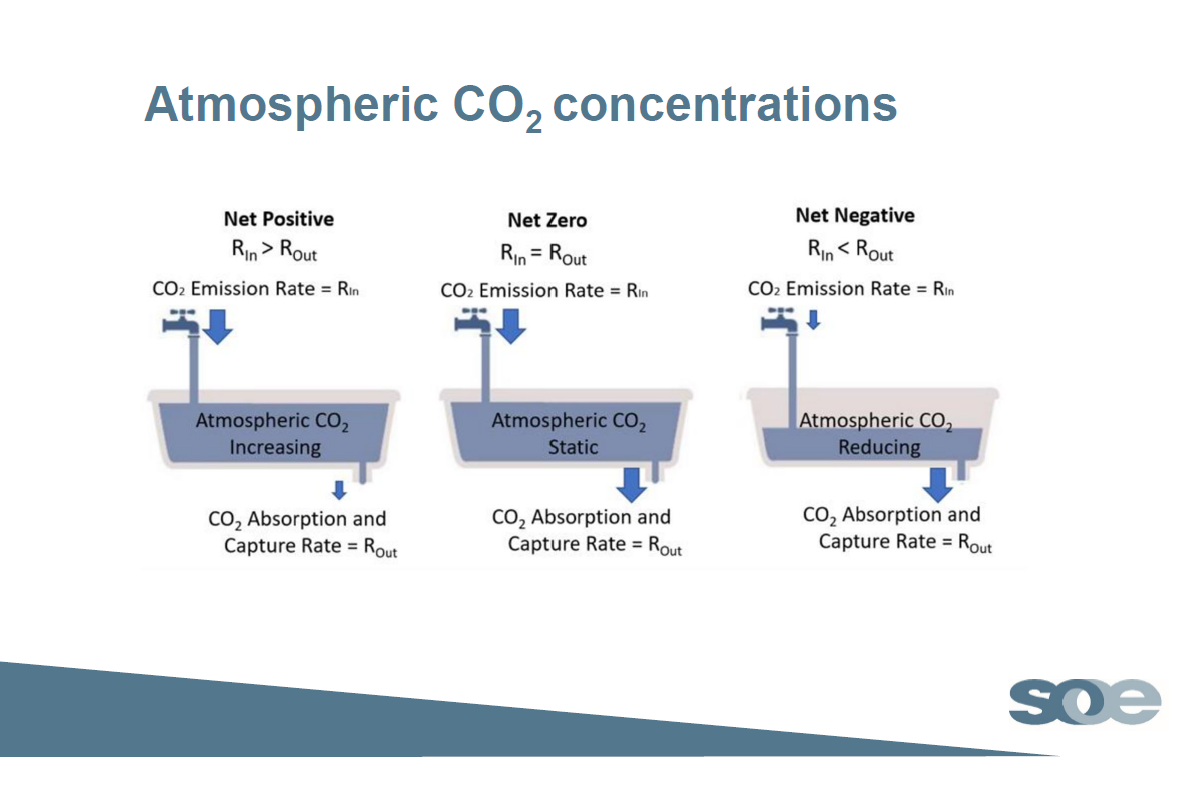Addressing high atmospheric carbon dioxide concentrations
Equipment operation and the resulting energy consumption is a large contributor of additional CO2 emissions entering the atmosphere.
Engineering has the solutions to address this, however many of the solutions appear to be driven by local optimisation and 20th century energy resources – neither of these help in solving today’s global warming problem.
Ian Jackson from the Society of Operations Engineers said, “We need a clear focus on reducing atmospheric carbon dioxide concentrations, together with solutions that actually deliver. This needs to be underpinned by rigorous and honest measurement and reporting of net changes in atmospheric carbon dioxide concentrations.”
The Society of Operations Engineers (SOE) promote safe, efficient, sustainable, and ethical engineering operations for the benefit of society. A recent paper, written by the SOE, sets out the practical engineering solutions currently in operation, or potentially very close to operating, which offer the prospect of ending CO2 originated by equipment operation entering the atmosphere.
Let’s consider the atmosphere as a bath – the atmospheric CO2 is the water in the bath and the concentration of CO2 in the atmosphere is represented by the water level in the bath. If the rate of water flowing in is greater than the water level flowing out, we have net positive and the level rises. If the water rate flowing in equals the water rate flowing out, the water level remains constant, and we have net zero. If the rate of water flowing in is less than the rate flowing out, the level drops and we have net negative.

Image courtesy of the Society of Operations Engineers
In order to lower CO2 concentrations, the rate of CO2 flowing into the atmosphere needs to be less than that flowing out.
Engineering solutions for ending CO2 emissions
Using wind, marine and solar as energy sources, for example, can help reduce CO2 emissions. This is simply because, when you use these methods of energy generation, no extra CO2 emissions are generated. The problem with these methods is their reliability and lack of flexibility in responding to change.
Using carbon-based fuels with 100% CO2 capture and storage also results in no CO2 emissions. They support all of today’s technologies and provide reliability and flexibility in electricity production.
Increasing CO2 free energy storage does not in itself reduce CO2 emissions, it does however provide the means of addressing the flexibility and reliability issues mentioned above.
“By using … these engineering-based solutions together, we have a means of safely and efficiently making significant reductions in carbon dioxide emissions from equipment operations,” Jackson notes.
The paper explores the role of safety, ethical standards, sustainability, and efficiency in ending CO2 originated by equipment operation entering the atmosphere. It also considers the move towards a greater use of hydrogen and the use of zero-emission equipment such as electric vehicles.
The paper can be downloaded here: https://www.soe.org.uk/resources/ending-co2-template.html


